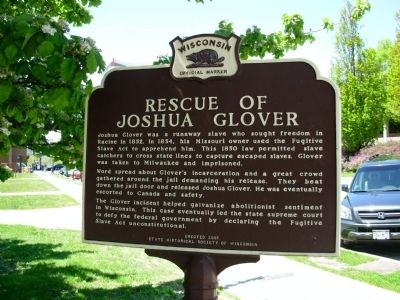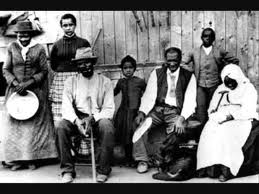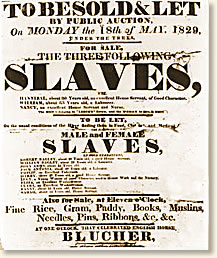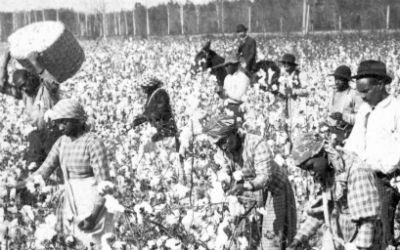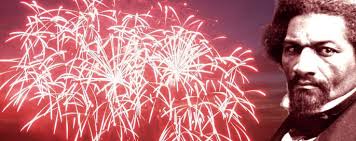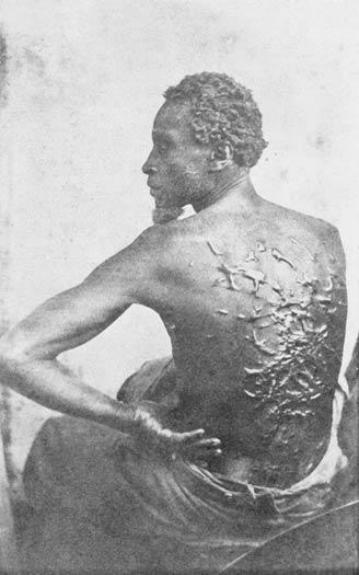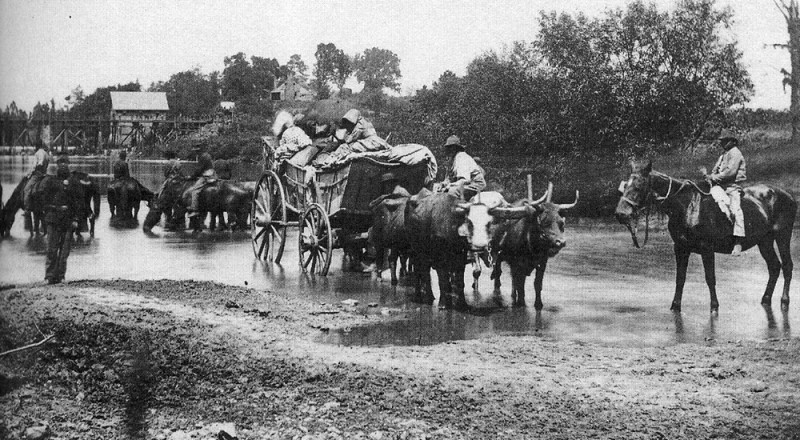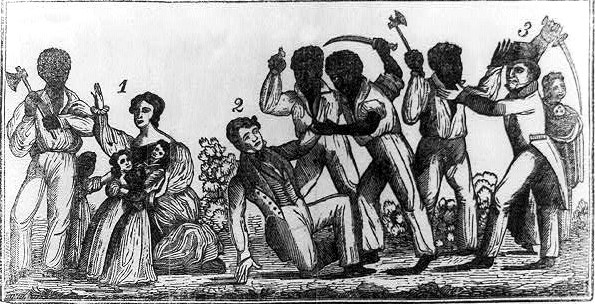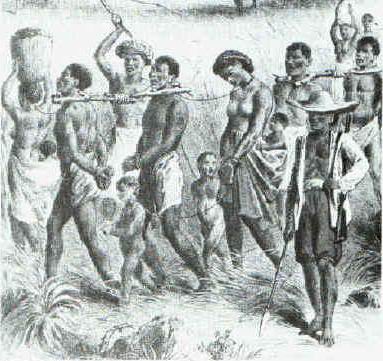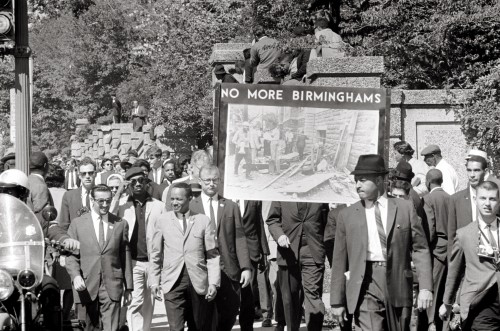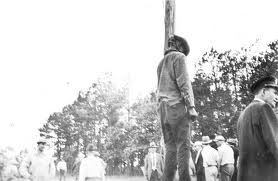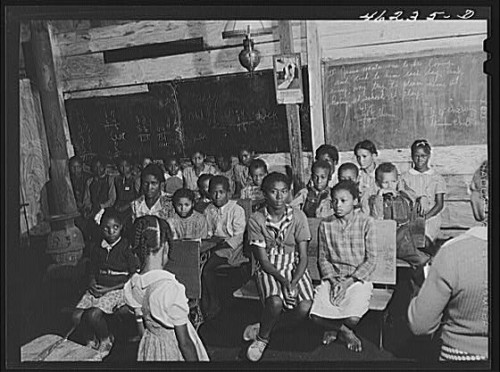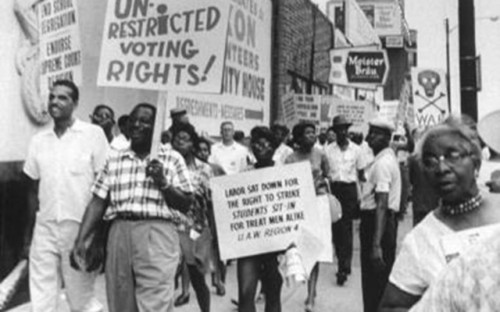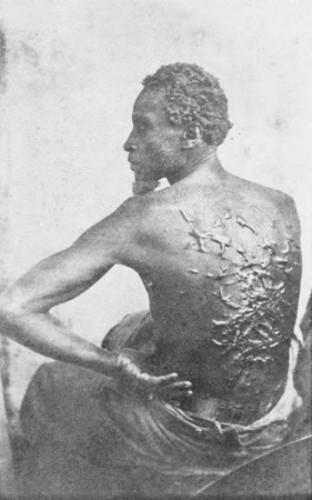Remembrance
Explore Our Online Exhibits
Breaking News
Worldwide Community Events
Week 3
- Sun 30
- Mon 31
- Tue 1
- Wed 2
- Thu 3
- Fri 4
- Sat 5
- Sun 6
- Mon 7
- Tue 8
- Wed 9
- Thu 10
- Fri 11
- Sat 12
- Sun 13
- Mon 14
- Tue 15
- Wed 16
- Thu 17
- Fri 18
- Sat 19
- Sun 20
- Mon 21
- Tue 22
- Wed 23
- Thu 24
- Fri 25
- Sat 26
- Sun 27
- Mon 28
- Tue 29
- Wed 30
- Thu 1
- Fri 2
- Sat 3
-
30March

Discounted Tours Every Wednesday
ABHM in Milwaukee, WI30March30March 30March
30March 8:00 AM - 12:00 AM
8:00 AM - 12:00 AMSailing to Freedom: Maritime Dimensions of the Underground Railroad
Chesapeake Bay Maritime Museum30March 8:00 AM - 12:00 AM
8:00 AM - 12:00 AMEbb/Flow: Pritika Chowdhry, Chotsani Elaine Dean and Courtney M. Leonard
Weisman Art Museum -
31March

Discounted Tours Every Wednesday
ABHM in Milwaukee, WI31March31March 31March
31March All Day
All DaySailing to Freedom: Maritime Dimensions of the Underground Railroad
Chesapeake Bay Maritime Museum31March
-
01April

Discounted Tours Every Wednesday
ABHM in Milwaukee, WI01April01April 01April
01April All Day
All DaySailing to Freedom: Maritime Dimensions of the Underground Railroad
Chesapeake Bay Maritime Museum01April
-
02April

Discounted Tours Every Wednesday
ABHM in Milwaukee, WI02April02April 02April
02April All Day
All DaySailing to Freedom: Maritime Dimensions of the Underground Railroad
Chesapeake Bay Maritime Museum02April
-
03April

Discounted Tours Every Wednesday
ABHM in Milwaukee, WI03April03April 03April
03April All Day
All DaySailing to Freedom: Maritime Dimensions of the Underground Railroad
Chesapeake Bay Maritime Museum03April 03April
03April 6:00 PM - 7:00 PM
6:00 PM - 7:00 PMTracing Early African American Legacies in Minnesota
Winona County Historical Society -
04April

Discounted Tours Every Wednesday
ABHM in Milwaukee, WI04April04April 04April
04April All Day
All DaySailing to Freedom: Maritime Dimensions of the Underground Railroad
Chesapeake Bay Maritime Museum04April
-
05April

Discounted Tours Every Wednesday
ABHM in Milwaukee, WI05April05April 05April
05April All Day
All DaySailing to Freedom: Maritime Dimensions of the Underground Railroad
Chesapeake Bay Maritime Museum05April 05April
05April 05April
05April
-
06April

Discounted Tours Every Wednesday
ABHM in Milwaukee, WI06April06April 06April
06April All Day
All DaySailing to Freedom: Maritime Dimensions of the Underground Railroad
Chesapeake Bay Maritime Museum06April
-
07April

Discounted Tours Every Wednesday
ABHM in Milwaukee, WI07April07April 07April
07April All Day
All DaySailing to Freedom: Maritime Dimensions of the Underground Railroad
Chesapeake Bay Maritime Museum07April
-
08April

Discounted Tours Every Wednesday
ABHM in Milwaukee, WI08April08April 08April
08April All Day
All DaySailing to Freedom: Maritime Dimensions of the Underground Railroad
Chesapeake Bay Maritime Museum08April
-
09April

Discounted Tours Every Wednesday
ABHM in Milwaukee, WI09April09April 09April
09April All Day
All DaySailing to Freedom: Maritime Dimensions of the Underground Railroad
Chesapeake Bay Maritime Museum09April
-
10April

Discounted Tours Every Wednesday
ABHM in Milwaukee, WI10April10April 10April
10April All Day
All DaySailing to Freedom: Maritime Dimensions of the Underground Railroad
Chesapeake Bay Maritime Museum10April 10April
10April
-
11April

Discounted Tours Every Wednesday
ABHM in Milwaukee, WI11April11April 11April
11April All Day
All DaySailing to Freedom: Maritime Dimensions of the Underground Railroad
Chesapeake Bay Maritime Museum11April 11April
11April
Going To Work For The Community: A Visual History of BSLL
Grohmann Museum -
12April

Discounted Tours Every Wednesday
ABHM in Milwaukee, WI12April12April 12April
12April All Day
All DaySailing to Freedom: Maritime Dimensions of the Underground Railroad
Chesapeake Bay Maritime Museum12April 12April
12April
Going To Work For The Community: A Visual History of BSLL
Grohmann Museum -
13April

Discounted Tours Every Wednesday
ABHM in Milwaukee, WI13April13April 13April
13April All Day
All DaySailing to Freedom: Maritime Dimensions of the Underground Railroad
Chesapeake Bay Maritime Museum13April 13April
13April
Going To Work For The Community: A Visual History of BSLL
Grohmann Museum -
14April

Discounted Tours Every Wednesday
ABHM in Milwaukee, WI14April14April 14April
14April All Day
All DaySailing to Freedom: Maritime Dimensions of the Underground Railroad
Chesapeake Bay Maritime Museum14April 14April
14April
Going To Work For The Community: A Visual History of BSLL
Grohmann Museum -
15April

Discounted Tours Every Wednesday
ABHM in Milwaukee, WI15April
National Association of Black Social Workers Conference 2025
Richmond, VA Marriott15April15April 15April
15April All Day
All DaySailing to Freedom: Maritime Dimensions of the Underground Railroad
Chesapeake Bay Maritime Museum15April 15April
15April
Going To Work For The Community: A Visual History of BSLL
Grohmann Museum -
16April

Discounted Tours Every Wednesday
ABHM in Milwaukee, WI16April
National Association of Black Social Workers Conference 2025
Richmond, VA Marriott16April16April 16April
16April All Day
All DaySailing to Freedom: Maritime Dimensions of the Underground Railroad
Chesapeake Bay Maritime Museum16April 16April
16April
Going To Work For The Community: A Visual History of BSLL
Grohmann Museum -
17April

Discounted Tours Every Wednesday
ABHM in Milwaukee, WI17April
National Association of Black Social Workers Conference 2025
Richmond, VA Marriott17April17April 17April
17April All Day
All DaySailing to Freedom: Maritime Dimensions of the Underground Railroad
Chesapeake Bay Maritime Museum17April 17April
17April
Going To Work For The Community: A Visual History of BSLL
Grohmann Museum -
18April

Discounted Tours Every Wednesday
ABHM in Milwaukee, WI18April
National Association of Black Social Workers Conference 2025
Richmond, VA Marriott18April18April 18April
18April All Day
All DaySailing to Freedom: Maritime Dimensions of the Underground Railroad
Chesapeake Bay Maritime Museum18April 18April
18April
Going To Work For The Community: A Visual History of BSLL
Grohmann Museum -
19April

Discounted Tours Every Wednesday
ABHM in Milwaukee, WI19April
National Association of Black Social Workers Conference 2025
Richmond, VA Marriott19April19April 19April
19April All Day
All DaySailing to Freedom: Maritime Dimensions of the Underground Railroad
Chesapeake Bay Maritime Museum19April 19April
19April
Going To Work For The Community: A Visual History of BSLL
Grohmann Museum -
20April

Discounted Tours Every Wednesday
ABHM in Milwaukee, WI20April20April 20April
20April All Day
All DaySailing to Freedom: Maritime Dimensions of the Underground Railroad
Chesapeake Bay Maritime Museum20April 20April
20April
Going To Work For The Community: A Visual History of BSLL
Grohmann Museum -
21April

Discounted Tours Every Wednesday
ABHM in Milwaukee, WI21April21April 21April
21April All Day
All DaySailing to Freedom: Maritime Dimensions of the Underground Railroad
Chesapeake Bay Maritime Museum21April 21April
21April
Going To Work For The Community: A Visual History of BSLL
Grohmann Museum -
22April

Discounted Tours Every Wednesday
ABHM in Milwaukee, WI22April22April 22April
22April All Day
All DaySailing to Freedom: Maritime Dimensions of the Underground Railroad
Chesapeake Bay Maritime Museum22April 22April
22April
Going To Work For The Community: A Visual History of BSLL
Grohmann Museum -
23April

Discounted Tours Every Wednesday
ABHM in Milwaukee, WI23April23April 23April
23April All Day
All DaySailing to Freedom: Maritime Dimensions of the Underground Railroad
Chesapeake Bay Maritime Museum23April 23April
23April
Going To Work For The Community: A Visual History of BSLL
Grohmann Museum -
24April

Discounted Tours Every Wednesday
ABHM in Milwaukee, WI24April24April 24April
24April All Day
All DaySailing to Freedom: Maritime Dimensions of the Underground Railroad
Chesapeake Bay Maritime Museum24April 24April24April
24April24April
Going To Work For The Community: A Visual History of BSLL
Grohmann Museum24April
-
25April

Discounted Tours Every Wednesday
ABHM in Milwaukee, WI25April25April 25April
25April All Day
All DaySailing to Freedom: Maritime Dimensions of the Underground Railroad
Chesapeake Bay Maritime Museum25April 25April25April
25April25April
Going To Work For The Community: A Visual History of BSLL
Grohmann Museum -
26April

Discounted Tours Every Wednesday
ABHM in Milwaukee, WI26April26April 26April
26April All Day
All DaySailing to Freedom: Maritime Dimensions of the Underground Railroad
Chesapeake Bay Maritime Museum26April 26April26April
26April26April
Going To Work For The Community: A Visual History of BSLL
Grohmann Museum -
27April

Discounted Tours Every Wednesday
ABHM in Milwaukee, WI27April27April 27April
27April All Day
All DaySailing to Freedom: Maritime Dimensions of the Underground Railroad
Chesapeake Bay Maritime Museum27April 27April27April
27April27April
Going To Work For The Community: A Visual History of BSLL
Grohmann Museum -
28April

Discounted Tours Every Wednesday
ABHM in Milwaukee, WI28April28April 28April
28April All Day
All DaySailing to Freedom: Maritime Dimensions of the Underground Railroad
Chesapeake Bay Maritime Museum28April 28April28April
28April28April
Going To Work For The Community: A Visual History of BSLL
Grohmann Museum -
29April

Discounted Tours Every Wednesday
ABHM in Milwaukee, WI29April29April 29April
29April All Day
All DaySailing to Freedom: Maritime Dimensions of the Underground Railroad
Chesapeake Bay Maritime Museum29April 29April29April
29April29April
Going To Work For The Community: A Visual History of BSLL
Grohmann Museum -
30April

Discounted Tours Every Wednesday
ABHM in Milwaukee, WI30April30April 30April
30April All Day
All DaySailing to Freedom: Maritime Dimensions of the Underground Railroad
Chesapeake Bay Maritime Museum30April 30April30April
30April30April 30April
30April
Going To Work For The Community: A Visual History of BSLL
Grohmann Museum -
01May

Discounted Tours Every Wednesday
ABHM in Milwaukee, WI01May01May 01May
01May All Day
All DaySailing to Freedom: Maritime Dimensions of the Underground Railroad
Chesapeake Bay Maritime Museum01May 01May01May
01May01May 01May
01May
Going To Work For The Community: A Visual History of BSLL
Grohmann Museum -
02May

Discounted Tours Every Wednesday
ABHM in Milwaukee, WI02May02May 02May
02May All Day
All DaySailing to Freedom: Maritime Dimensions of the Underground Railroad
Chesapeake Bay Maritime Museum02May 02May02May
02May02May 02May
02May
Going To Work For The Community: A Visual History of BSLL
Grohmann Museum -
03May

Discounted Tours Every Wednesday
ABHM in Milwaukee, WI03May03May 03May
03May All Day
All DaySailing to Freedom: Maritime Dimensions of the Underground Railroad
Chesapeake Bay Maritime Museum03May 03May03May
03May03May 03May
03May
Going To Work For The Community: A Visual History of BSLL
Grohmann Museum
Share
"Remembrance" is one of America's Black Holocaust Museum's four themes, which serve as pillars in our virtual museum.
In every gallery, we remember important historical events and people who have played a role in civil rights or otherwise impacted the lives of Black Americans and others in the African diaspora. Some of these are well-known, but most are not. The stories told in most of ABHvM's exhibits have been left out of our history books or been told incompletely.
You will also notice how this theme appears in some events and breaking news articles, especially as new history comes to light or society finally treats certain subjects with respect.
The importation of slaves was outlawed by England in 1807 and by the USA in 1808. Slaves could still be held and bred in the two countries, but no new slaves could be brought from Africa. The British and American navies patrolled the west coast of Africa. They stopped suspected slave traders and took hold of ships where slaves were found. Then they returned their human cargo to Africa. Rev. Robert Walsh served on one of the patrol ships. This is his eyewitness report.
Read More About This TopicIn this exhibit Dr. Alexander Falconbridge describes what he saw and heard about how slaves were captured inland and sold on the coast to slave traders.
Read More About This TopicIn early March 1859 an enormous slave action took place at the Race Course three miles outside Savannah, Georgia. Four hundred thirty-six slaves were to be put on the auction block including men, women, children and infants. Word of the sale had spread through the South for weeks, drawing potential buyers from North and South Carolina, Virginia, Georgia, Alabama and Louisiana. All of Savannah’s available hotel rooms and any other lodging spaces were quickly appropriated by the influx of visitors. In the days running up to the auction, daily excursions were made from the city to the Race Course to inspect, evaluate and determine an appropriate bid for the human merchandise on display.
Read More About This TopicWhy didn’t the Civil Rights Movement end racism in America? The social movements of the 1960s achieved some important changes for civil rights, women’s rights, and the environment. However, not everyone agreed with these changes. During the 1970s and 1980s, opponents started a movement of their own. Their goal was to overturn the gains of the 1960s.
Read More About This TopicThe 1960s saw an upsurge in civil rights and other organizations promoting freedom and equality for blacks and women. The 1970s brought a backlash against those movements by well-funded and well-placed organizations of the Right seeking more freedom for corporations and a return to traditional roles for women. In the 1980’s, hip-hop and punk rock music expressed anger at “The Power” through their lyrics instead of through actions to change laws.
Read More About This TopicIn 1927, a frenzied white mob in Little Rock, Arkansas, was focused on revenge. A little white girl had been murdered and they wanted to lynch whoever did it. When they grabbed a black man, they knew he wasn’t the killer. Still, they thought he’d done something else that made them mad. John Carter was their scapegoat: he paid the price for something he didn’t do.
Read More About This TopicEducation is the key to economic success. It is true now, and it was true in the Jim Crow South. Southern education was not very good – even for white children. But education for blacks in the South in the early 1900s was worse in many ways. In this exhibit you can learn what school was like for most African American children in the South – and why.
Read More About This TopicFrom about 1900 to 1965, most African Americans were not allowed to vote in the South. White people in power used many methods to keep black people from voting. Some of these methods also prevented poor white people from voting. Today there are still laws and customs that make it harder for African Americans, other minorities, and some whites to vote.
Read More About This Topic“Jim Crow” refers to a five-part system developed in the late 1800s and early 1900s to support white supremacy and oppress black citizens. Although there were laws that discriminated against African Americans throughout the country, the Jim Crow system existed only in the South. This exhibit briefly describes the five oppressions of the Jim Crow system.
Read More About This TopicThis famous photograph communicated a powerful message about the so-called “peculiar institution”—undermining the notion that slavery was benign.
Read More About This Topic